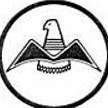Guidance for return to service after engine fire.
-
Members Online
- Stealth Mooney
- Rwsavory
- stlcg
- flyboy0681
- Hank
- acekng1
- bixmooney
- Igor_U
- dkkim73
- emiliocastelli
- Dgeyer
- aviatoreb
- AJ88V
- 201er
- RangerM20
- DonMuncy
- Ventus4
- MikeOH
- Montreal
- Gary0747
- takair
- Flyler
- PT20J
- ProtoFly
- wombat
- FlyboyKC
- Mooney in Oz
- OR75
- Andy95W
- hazek
- Mikey30V
- Z W
- TCC
- Sue Bon
- TravelingIA98
- Danb
- LANCECASPER


Recommended Posts
Join the conversation
You can post now and register later. If you have an account, sign in now to post with your account.